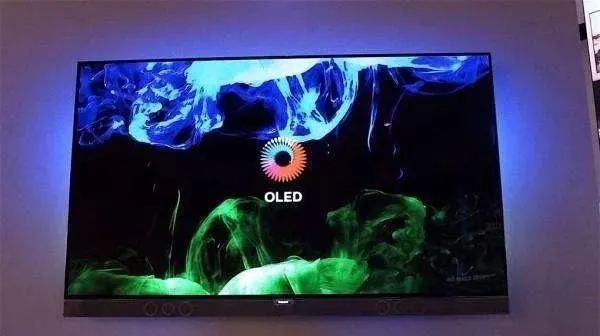
Recently, more and more flagship smartphones have adopted OLED screens. However, while the visual effect is enhanced, OLED screens can actually be more harmful to the eyes compared to traditional LCD screens.

OLED screens use organic light-emitting materials. Due to inherent reasons, most of them utilize PWM dimming, which continuously turns the screen on and off to adjust brightness. This “flicker” can cause certain harm to the human eye, and prolonged use can easily lead to increased eye pressure and vision deterioration.
Of course, you may wonder: What is low-frequency PWM dimming? Why is it harmful to the eyes?
1. What is Flicker?
Flicker refers to the alternating light and dark changes that can be perceived by the human eye.
There are two key factors here, both of which are essential:
-
First, there is a change in brightness.
-
Second, the alternating speed can be perceived by the human eye.
Generally speaking, low frequencies like 50Hz and 100Hz are within the perceptible range for the human eye and can be harmful.
In contrast, high frequencies like 5000Hz and 10000Hz are not perceivable to the human eye and are basically harmless.
The human eye evolved as a sensory organ under natural light. When light enters the eye, it automatically adjusts the pupil size based on the intensity of the light, thereby controlling the light flux entering the eye.
With the advent of electric lights and artificial light sources, the flicker issue emerged. The ceiling lights, table lamps, smartphone screens, and computer screens we use daily are all considered artificial light sources.
If an artificial light source has flicker (i.e., perceivable light and dark alternation), it can lead to excessive adjustment by the eyes, resulting in eye fatigue. Prolonged exposure to flickering artificial light sources can damage vision.

The harm of artificial light sources to vision is often overlooked.
We all know that chocolate and sweets should not be consumed excessively, or one will gain weight. This is because, in the long evolutionary history of humanity, sweets as an industrial food have only been invented in the last hundred years. However, our digestive system has not changed much from that of our ancestors thousands of years ago. If someone treats sweets as a staple food, they will quickly gain weight.
Similarly, throughout our evolutionary history, the visual system has always operated under natural light sources. The invention of electric lights is not even two hundred years old.
Today, various flickering screens have become the artificial light sources we face the longest in our daily lives.
While sweets are unhealthy, we do not treat them as staple foods and only indulge occasionally. However, our generation is unable to part with smartphones and computer screens, which has no precedent in human history.
This subtle and cumulative harm must be taken seriously.
When I educate others about the harm caused by flicker, I am often asked these two questions:
1. Why do incandescent bulbs not flicker?
Incandescent bulbs are a relatively old artificial light source and do not have flicker issues.
In China, the frequency of alternating current is 50Hz, and the amplitude of the power voltage changes at a rate of 100Hz. 100Hz is a low frequency, but why do incandescent bulbs not have flicker problems?
Because the brightness changes of incandescent bulbs are very small, there is no significant light and dark variation, so there is no flicker.
For example, if we stand in a room with a window and pull down a blackout curtain, the room will darken.
If a display uses 100Hz PWM dimming, it is equivalent to opening and closing the curtain one hundred times per second. The human eye will over-adjust in response to such changes, leading to visual fatigue.
However, the brightness changes of incandescent bulbs are minimal, akin to opening and closing a sheer curtain one hundred times a second. Pulling down the sheer curtain will not significantly reduce the light in the room, resulting in no light and dark variation and thus no flicker issue.
2. Why are refresh rates unrelated to flicker?
Some may ask: My monitor has a refresh rate of 60Hz, and even high-end gaming monitors only reach 120Hz. Do they all have flicker?
There is no need to worry at all.
There is a common misconception here; the 60Hz refers to the screen refresh rate, which indicates how many times the screen redraws the image per second. Screen refreshing does not cause light and dark changes, so there is no flicker issue.
Using the previous window example, a refresh rate of 60Hz is akin to changing the window glass 60 times per second, which does not affect the intensity of light entering the room, so there is no need to worry.

2. What Are the Common Dimming Methods for Screens? Which Ones Cause Flicker?
When using smartphones and computers, we can adjust their brightness. The three most common dimming methods are:
-
High-frequency PWM dimming
-
Low-frequency PWM dimming
-
DC dimming
From the perspective of eye health, DC dimming > high-frequency PWM dimming >> low-frequency PWM dimming
Many people with sensitive eyes complain that using poor-quality displays allows them to perceive flickering, and the culprit behind this flickering is the notoriously low-frequency PWM dimming.
-
DC dimming
First, the best is DC dimming, which is a direct current dimming technology that has no flicker issues at any brightness level, making it the healthiest option.
All iPhones, except for the iPhone X, use DC dimming.
2. High-frequency PWM dimming
Currently, LCD screens use LEDs as backlight sources. LEDs can switch on and off very quickly, completing the process in a very short time (microsecond level).
Because of this characteristic of LEDs, as long as their power source is a pulse source, brightness can be adjusted by changing the pulse width. This dimming method is known as pulse-width modulation (PWM) dimming.
A screen with 10000Hz high-frequency PWM dimming flickers ten thousand times per second.
We know flickering is undesirable, but there is a saying: “As long as I run fast enough, loneliness won’t catch up with me.”
Similarly, as long as the screen backlight flickers fast enough, our eyes will not perceive it, theoretically causing no significant harm to the eyes, which is much better than low-frequency PWM dimming.
Reducing the brightness of a 10000Hz screen essentially means that in a millionth of a second, the time the screen is on becomes shorter, and the time it is off becomes longer, ultimately achieving a dimmer screen.
For instance, Apple’s MacBook Air/Pro utilizes high-frequency PWM dimming, which has been tested to be above 10000Hz and is very safe.
3. Low-frequency PWM dimming
What frequency qualifies as low-frequency PWM dimming?
The national standard for eye-protecting desk lamps is that the frequency must be above 3125Hz. If you have strict requirements, screens using PWM dimming should ideally be above 3000Hz.
Frequencies below 400Hz are definitely considered low-frequency PWM dimming.
I personally have sensitive eyes and avoid using PWM dimming screens below 1000Hz.
PS: Low-frequency PWM dimming screens at low brightness are the most harmful to the eyes. At low brightness, the pulse has a higher duty cycle, which is more damaging than a low duty cycle (high screen brightness).
Disclaimer: The content on WeChat is collected from the internet, and copyright belongs to the original creators. It does not represent the views of this public account.If there are any infringements, please leave a message, and we will promptly delete the infringing content!
